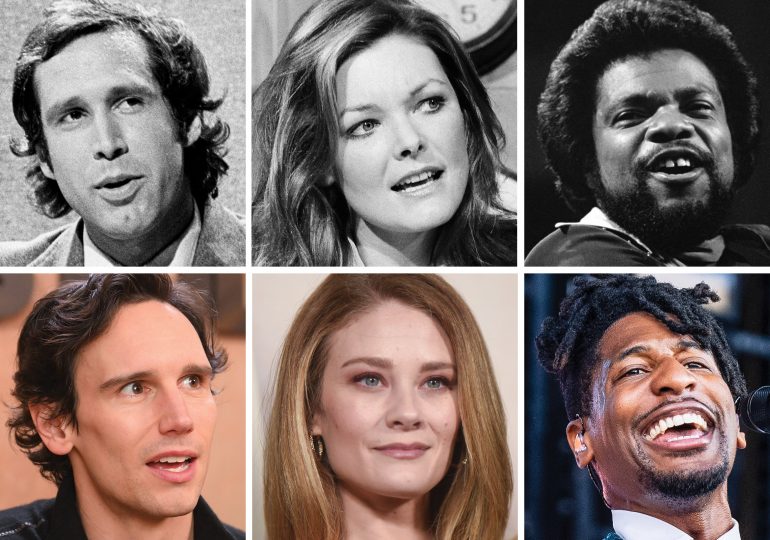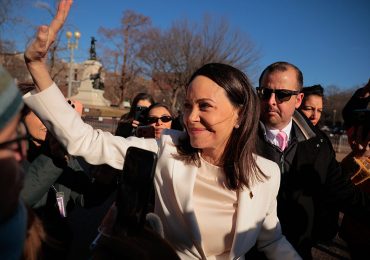Saturday Night, in select theaters Sept. 27 and in wider release on Oct. 11, dramatizes the story of the chaotic 90 minutes before the first episode of what would become Saturday Night Live.
The landmark comedy show, which began airing on Oct. 11, 1975, was dreamed up by Lorne Michaels, who remains at the helm heading into its 50th year and is played on-screen by The Fabelmans breakout Gabriel LaBelle. The show, now an institution, is known for turning unknown comedians into Hollywood stars—Jimmy Fallon, Eddie Murphy, Amy Poehler, to name just a few. Its parodies of politics are highly influential, and presidential candidates have been known to make an appearance (sometimes controversial) in the walk-up to Election Day. And the musical guest appearances usually serve as a sign that a musician has “made it.”
[time-brightcove not-tgx=”true”]
Saturday Night, which sees fake blood explode everywhere in one moment and the set catch fire in another during the frenetic lead-up to the show, is an exhilarating journey through the challenges of getting the show off the ground. Co-written and directed by Jason Reitman (who, in addition to making movies like Juno and Up in the Air, served as an SNL writer for one week), it features an expansive cast playing some of the most famous names in comedy history, as well as a few that didn’t turn out to be quite as ubiquitous household names. Below is a guide to the entertainers portrayed in the movie and the projects they’re best known for.
Dan Aykroyd
Dan Aykroyd met Lorne Michaels doing sketch comedy in their native Canada. He appeared on SNL from 1975 to 1979, winning a 1977 Emmy for writing. Among the sketches he’s most famous for are Blues Brothers, parodying blues musicians with John Belushi, and Coneheads, where he was the patriarch family of extraterrestrials with bald, cone-shaped heads. After SNL, he became best known for the movies Ghostbusters and Trading Places, opposite another comedian who got his start on the show, Eddie Murphy. In Saturday Night, Aykroyd is portrayed by Dylan O’Brien, and shown using the same pickup line on every female cast member he encounters. The sketch depicted in the movie in which the women flip the script and play construction workers cat-calling a short-shorts-clad Aykroyd really happened.
John Belushi
Belushi, played by Matt Wood in the movie, appeared on SNL throughout the 1970s, winning a 1977 Emmy for writing. He was Aykroyd’s right-hand man in the Blues Brothers sketches, which turned into a 1980 film. His most famous movie was Animal House (1978), a sendup of college Greek life. He died in 1982 of a drug overdose at the age of 33. In his 1982 obituary, TIME described Belushi as the “archangel of the grotesque,” noting “his face—round and blandly menacing in repose, like a middle-level Mafioso’s—could contort into semblances of slashing samurai, killer bees, Joe Cocker or Marlon Brando.” He appeared in famous sketches as depicted in Saturday Night, including “The Killer Bees” and “The Wolverines,” the show’s first sketch ever.
Chevy Chase
SNL launched Chevy Chase to a major acting career. He earned two Emmy Awards for writing and outstanding continuing performance by a supporting actor. The first host of SNL’s long-running sketch Weekend Update, which parodies broadcast journalists, his tagline was, “Good evening, I’m Chevy Chase and you’re not.” (We see him sit in the Weekend Update chair, as played by Corey Michael Smith, in the film.) He’s best known for the golf-sendup Caddyshack and the National Lampoon films. In the film, Kaia Gerber plays his first wife Jacqueline Carlin, who was an extra on SNL.
Jane Curtin
Nicknamed “the Queen of Deadpan,” Curtin famously appeared opposite Aykroyd in a parody of TV pundits, in which Aykroyd would call her an “ignorant slut.” She is also famous for her Coneheads sketch with Aykroyd, which inspired the hit 1993 movie Coneheads. She earned two Emmy Awards for her starring role on the 1980s sitcom Kate & Allie, spent many years on 3rd Rock from the Sun in the lat ’90s, and has been seen on TV more recently in The Good Fight, and Broad City. Kim Matula (The Bold and the Beautiful, The Sex Lives of College Girl) depicts her in Saturday Night.
Garrett Morris
The first Black SNL cast member, Morris trained at Juilliard and performed with Harry Belafonte’s folk singers. He was indeed a playwright as Saturday Night mentions. Lorne Michaels liked one of the plays he wrote and hired him to help write for SNL. As he says in James Andrew Miller and Tom Shales’ book chronicling the history of SNL, Live from New York, he had trouble writing for such a short time slot, so Michaels had him audition for the cast of the first episode, and he got the part. In the movie (depicted by recent Emmy winner Lamorne Morris), he is concerned that despite his credentials, he’d get typecast for stereotypical roles—exemplified in a the moment in which he sings, “I’m going to get me a shotgun and kill at the whiteys I see.” In Live From New York, he said he was open to experimentation: “If stuff was on the line either racially or sexually, I didn’t give a damn.” Among his best known credits are The Jeffersons, 2 Broke Girls, and The Jamie Foxx Show.
Laraine Newman
Michaels had hired Newman to perform on a Lily Tomlin special in 1975, and then invited her to be one of the original cast members of SNL. During her time on the show in the 1970s, she parodied journalists, as an on-air reporter for Weekend Update and an anchor on a parody of public access television, where she’d make lewd jokes. Her movie credits include Coneheads, Fear and Loathing in Las Vegas, and Jingle All the Way. Emily Fairn (Mary & George, Black Mirror) plays her in Saturday Night.
Gilda Radner
Radner (Ella Hunt in the movie) was the first SNL cast member that Michaels chose, and her sketches became some of the most famous in SNL history. She played a personal advice expert named Roseanne Roseannadanna and impersonated legendary TV journalist Barbara Walters, whom she called “Baba Wawa.” In one famous Weekend Update segment, her character sounds off about “violins on television,” and Chevy Chase informs her that the prompt was actually supposed to be “violence on television.” She died of ovarian cancer at the age of 42 in 1989. Though she appeared in some film and TV projects after leaving SNL in 1980, her legacy remains heavily tied to her years and characters on that show.
Rosie Shuster
Shuster, one of SNL’s first writers and a two-time Emmy winner for her work on the show, had known Lorne Michaels since childhood. As she says Live from New York, “I swear to God. There was not a pubic hair in sight when he arrived on my doorstep.” Michaels and Shuster were married from 1967 to 1980, but as the movie depicts (she’s performed by Bottoms star Rachel Sennott), they weren’t really romantically involved when Saturday Night premiered in 1975. “I wasn’t actually in a couple with Lorne when the show started,” she says in Live from New York. “But I never really actually got divorced from him, I don’t think, until like 1980 or something. I just didn’t want to deal with that. And so I didn’t.” She continued writing for SNL up until 1988 and would later go on to receive recognition for her work on The Larry Sanders Show. Gilda Radner starred in some of Shuster’s most famous sketches, including the first Roseanne Roseannadanna appearance, the Baba Wawa impersonation, and the Nerds sketches featuring Bill Murray and Gilda Radner as nerdy teenagers.
Lorne Michaels
The 21-time Emmy winner has been the showrunner of SNL since the first episode aired nearly 50 years ago. At the time the show began, Johnny Carson disliked the weekend repeats of his shows, so NBC took a chance on Michaels’ idea for a variety show with up-and-coming actors that would air at 11:30 p.m. on Saturdays. And the rest is history. For the 2015 list of TIME’s most influential people, Jack Nicholson described Michaels’ credo as “be funny and get on with it.”
Valri Bromfield
A member of the prestigious comedy troupe Second City— a feeder to SNL— the Canadian comedian was part of a comedy duo with Dan Aykroyd and had a regular part on a morning show hosted by David Letterman. As Saturday Night shows (she’s played by Corinne Britti), she performed on the first episode of SNL, but Lorne asked her at the last minute to cut her bit down from 5 minutes to 2 minutes. SNL wasn’t her only Lorne Michaels production; she also appeared in Michaels’ other NBC sketch comedy show The New Show.
Billy Crystal
In Saturday Night, Billy Crystal, played by Nicholas Podany, is angsting about having to cut his standup bit down from about five minutes to about two minutes, like Bromfield. He ends up not performing—which happened in real life—but he returned to the show in the mid-1980s as a cast member and a host. Some of his most well-known comedy movies include When Harry Met Sally, Throw Mamma from the Train, America’s Sweethearts, and the Monsters Inc. franchise. He’s a Tony Award winner, a nine-time Academy Awards host, a six-time Emmy winner, and a two-time Grammy winner.
Al Franken
Franken, played in the movie by Taylor Gray, boasts four Emmy Awards for his writing on SNL, between the 1970s and 1990s. He appeared as a cast member in the late 1980s and early 1990s, and his most famous role, as a character named Stuart Smalley, parodied self-help gurus. He served as the Democratic U.S. Senator from Minnesota from 2000 to 2018, when he was forced to resign over sexual misconduct allegations.
Milton Berle
Berle, who is played by J.K. Simmons in Saturday Night (including a memorable scene in which he attempts to prove his manhood), was a vaudeville comic who appeared on the cover of TIME in 1949. The cover story described him as “the undisputed No. 1 performer on U.S. TV” during his time as host of the NBC variety show Texaco Star Theater. He boasts two stars on the Hollywood Walk of Fame, but is also famous—or infamous—among comedians for whipping out his penis in front of people. SNL writer Alan Zweibel describes one such incident in Live from New York. In the movie, he is depicted as a member of the old guard of comedy TV, against which Michaels’ more revolutionary approach stands in stark contrast.
George Carlin
Carlin’s most famous joke is his 1972 line about the seven words that cannot be said on television. And yet, Saturday Night still tapped him to be its first ever host. As TIME described his impact in his 2008 obituary, “When the culture began to change in the late 1960s—when the old one-liner comics on The Ed Sullivan Show were looking pretty tired and irrelevant to a younger generation experimenting with drugs and protesting the war in Vietnam—George Carlin was the most important stand-up comedian in America.” He’s depicted in Saturday Night in all his cranky glory by The Americans’ Matthew Rhys.
Billy Preston
The keyboardist who performed on the first episode of Saturday Night worked with the Beatles, the Rolling Stones, Sly and the Family Stone, and Little Richard. The 1969 single “Get Back” is credited to “The Beatles With Billy Preston,” the only time the band shared a credit. He wrote, with Bruce Fisher, the famous “You Are So Beautiful” (“You are so beautiful to me/ can’t you see?”) and boasted chart-toppers “Nothing From Nothing” (1974)—which Jon Batiste plays in the Saturday Night movie—and “Will It Go Round in Circles” (1973). (Incidentally, Batiste also composed the score for Saturday Night).
Janis Ian
The musician performed her Grammy Award-winning song “At Seventeen” on the first episode of SNL. As the song goes, she dedicated her coming of age ballad “to ugly duckling girls like me.” Mentored by Leonard Bernstein, critics hailed her as the female Bob Dylan. She has continued to make music, winning a 2013 Grammy for best spoken word album. She’s depicted in Saturday Night by Naomi McPherson, a member of the band Muna.
Leave a comment








